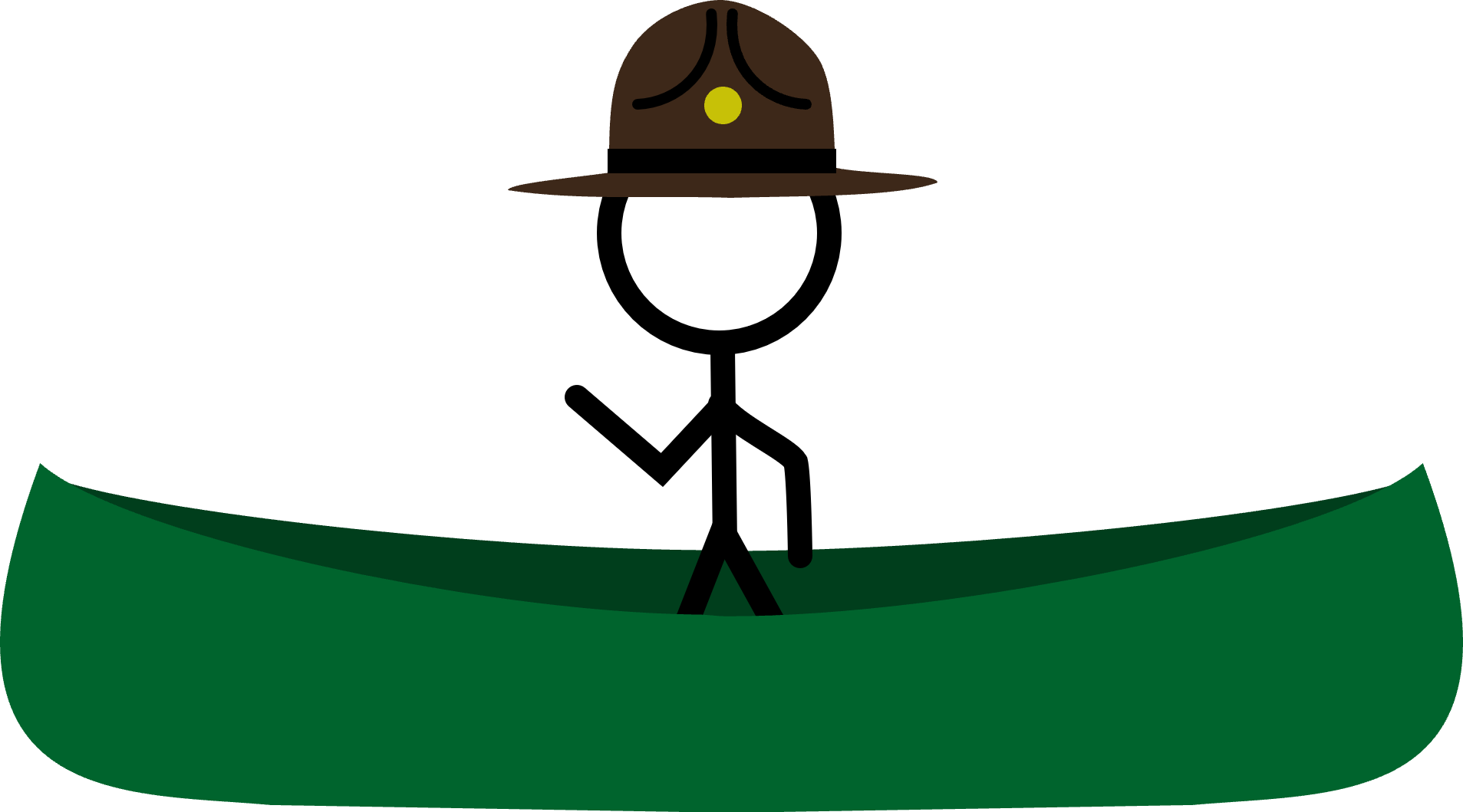
Before heading out into the water, it if vital that team members know how to recover a capsized canoe.
There are few basic strokes to start out with.
Your are generally far better off staying with a capsized canoe. It
floats, which is a good thing when you are in the water. It is also
easier to see than a lone swimmer in open water.
If you are close enough to shore, move your swamped canoe to shore.
It is easier and safer to empty out a swamped canoe in shallow water or on
the shore than it is in deep water.
Paddlers should know how to safely exit a canoe. You may wish to get out of your canoe at some point without capsizing it. This may be needed to recover gear, perform a rescue, dive for something to just to cool off in the water.
One method is to hold onto the side of the canoe with your thumb
outboard. Stay low and fall out of the canoe butt first into the
water while holding onto the side of canoe. This will help you from
loosing your canoe.
Entering a canoe in deep water can be challenging but is a skill all paddlers should have.
To enter a canoe, place hands deep into the well of the canoe, or reach
across the opposite side of a thwart. Kick hard and pull yourself
into the canoe. Turn so your butt is as low as possible in
canoe. When the canoe has stabilized, preposition legs in canoe.
If you have a buddy, there are multiple ways of getting in.
Simultaneous Entry - both paddlers enter opposite sides of canoe at same time. If timed right, rocking of canoe is minimized.
Buddy Assisted - One paddlers providers counter weight on opposite side of canoe while other paddlers enters canoe. Once one paddler enters canoe, that paddler carefully provides counterbalance to help second paddler reenter canoe.
End Entry - if the canoe is weighted at one end, a paddler can enter on the end of the canoe.
Stirrup Assisted End Entry - Tying a loop at the end of
the canoe will make reentry a snap. It helps if someone is provided
counter balance on the opposite end of the canoe.
Counterweight Assisted Entry - Filling a drybag full of
water and hanging it over the opposite side provides counterweight when
entering a canoe. Using a stirrup loop will also make it even
easier.
The easiest way to reenter a canoe is with the assistance of someone in
another canoe. The rescuer can tilt your canoe towards you, making
entry easier and then stabilize your canoe while entering.
With vigorous rolling of the canoe back and forth, you can remove water
from your canoe one splash at a time. If you roll it too far, more
water will enter. If your roll it too slow, nothing happens.
This technique is harder to perform than it looks, but is one more rescue
you should be knowledgeable of before hitting open water.
The T-Rescue is the easier rescue to teach. A swamped canoe is
pulled over another canoe, drained, flipped back over and placed back in
the water.
The parallel rescue is a favorite for many and only takes seconds to
perform. The rescue canoe pulls up next to the swamped canoe, pulls
it out of the water to drain it and flips it back over right-side-up.
A self recovery if a rescue boat is not available. Paddler(s) flip
canoe in water, emptying it in the process.
If performed solo, do so from underneath.
It is much easier with two people.
With two people, it can be performed from the ends of the canoe with a lift and twisting motion.
Basic steps:
Using an inflated dry bag under one of the gunwales will make flipping much easier.
If your canoe is outfitted with airbags, you may not need to completely
empty out your canoe to self rescue. Simple get back in canoe and
start bailing/pumping out water.